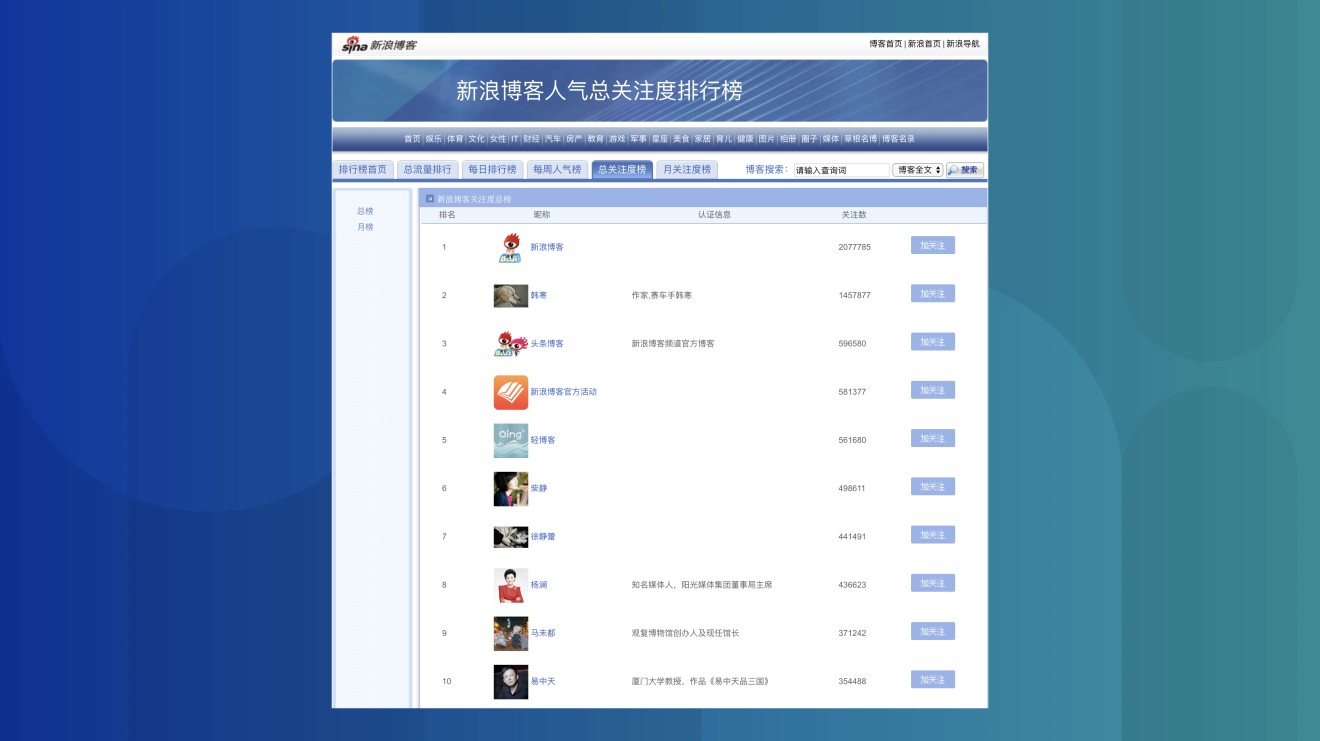
Weibo maker Sina is one of China’s oldest web portals
Sina is one of China’s earliest and biggest web portals, and is known for being the maker of social media channel Weibo. It also has an online media business, but it’s now facing fierce competition from Bytedance’s news aggregator Toutiao.
Sina was started by Wang Zhidong, who led the merger of a software company and an international news site. That combination formed the original Sina web portal.

But Sina Blog’s popularity faded as new social media platforms grew -- including WeChat, and Sina’s own Weibo. Started in 2009, the Twitter-like Weibo is now one of the country’s most popular social media platforms, boasting over 430 million active users, and it’s also still the bulk of Sina.
How Weibo became China’s most popular blogging platform
Sina today still has a growing business, but is falling short of its former rivals. Its market cap is about one third of NetEase’s, and while NetEase has expanded to games and online shopping, Sina is largely an online media platform that depends heavily on online advertising.
Still, that might not be a sure thing. Sina is facing increasing competition now, as the rising Bytedance fights for screen time with popular news aggregator Toutiao and viral short video app Douyin (TikTok in the West).
Breaking down China's most popular news app, Toutiao
For more insights into China tech, sign up for our tech newsletters, subscribe to our Inside China Tech podcast, and download the comprehensive 2019 China Internet Report. Also roam China Tech City, an award-winning interactive digital map at our sister site Abacus.
For more insights into China tech, sign up for our tech newsletters, subscribe to our Inside China Tech podcast, and download the comprehensive 2019 China Internet Report. Also roam China Tech City, an award-winning interactive digital map at our sister site Abacus.

